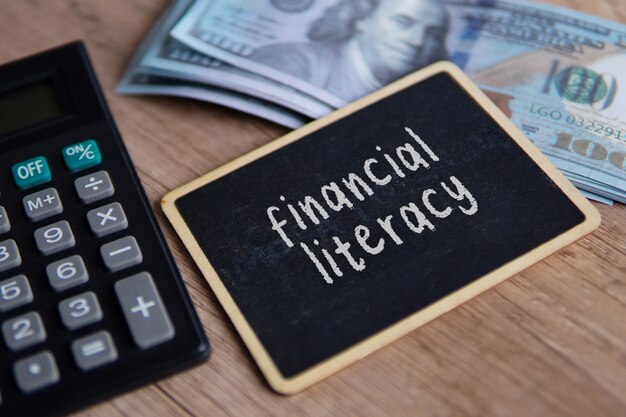How to Find a Good APR for Your Personal Loan: What You Need to Know
Seeking a personal loan can feel like navigating a labyrinth of choices, especially when it comes to understanding Annual Percentage Rates (APRs). But finding a good APR for a personal loan doesn't have to be an enigma. Whether you're consolidating debt, financing a large purchase, or covering unexpected expenses, understanding APRs can save you from future financial headaches. Let’s delve into what constitutes a fair rate and how to secure the best deal for your circumstances.
Understanding APR: The Basics
What Is APR?
APR, or Annual Percentage Rate, is the cost of borrowing money expressed as a yearly interest rate. It includes not only the interest on the principal amount but also any fees or additional costs associated with the loan. This makes APR a more comprehensive measure of a loan's cost compared to the basic interest rate.
Why APR Matters
APR is crucial because it enables you to compare different loan offers on a level playing field. A lower APR typically means you will pay less over the life of the loan, though the terms and fees can vary widely between lenders. Hence, considering the APR helps you make informed financial decisions.
What Is Considered a Good APR for a Personal Loan?
Factors That Influence APR Rates
Several factors influence the APR you might be offered:
- Credit Score: Generally, a higher credit score translates to a lower APR.
- Loan Amount and Term: Larger loan amounts or longer terms can affect the APR.
- Lender Type: Banks, credit unions, and online lenders might offer different rates.
- Economic Conditions: Interest rates fluctuate based on national economic conditions.
Typical APR Ranges
APR can vary widely, but here's a sense of what you might expect:
- Excellent Credit (720-850): APRs typically between 6% to 10%.
- Good Credit (690-719): APRs can range from 10% to 15%.
- Fair Credit (630-689): You may see APRs from 15% to 20%.
- Bad Credit (<630): APRs can be as high as 20% or more.
What Is a Good APR for You?
The ideal APR is subjective and heavily depends on your specific scenario. For instance, a 12% APR might be acceptable for someone with a fair credit score but considered high for an individual with excellent credit. Always aim for the lowest APR available to you, but balance that with other loan factors like fees, repayment terms, and lender reliability.
Evaluating APR Offers: Key Considerations
Compare Apples to Apples
When assessing APRs, make sure you are comparing loans of the same amount and term. Factors like origination fees can also impact the effective APR, so ensure full transparency from lenders.
Look Beyond the APR
While the APR is crucial, it is not the only factor to consider:
- Fees: Origination fees, late fees, and prepayment penalties can significantly affect the total cost.
- Loan Terms: Longer terms may lower monthly payments but can increase overall interest paid.
Consider Your Financial Health
Ensure the loan fits comfortably within your budget. Avoid stretching finances just to qualify for a loan with a slightly better rate.
Tips to Secure a Lower APR
Improve Your Credit Score
One of the most effective ways to secure a lower APR is to enhance your credit score. This can be done by:
- Paying bills on time
- Reducing debt levels
- Checking and disputing inaccuracies in credit reports
Shop Around
Don't settle for the first offer. Compare rates from multiple lenders, including banks, credit unions, and online platforms, to ensure you get the best deal.
Consider a Cosigner
Having a cosigner with good credit can significantly lower the APR on your loan, although it comes with risks for the cosigner if you are unable to make payments.
Comparing Lender Options
Traditional Banks
These institutions often provide personal loans with competitive APRs, especially for existing customers. However, they may have stricter approval criteria.
Credit Unions
Credit unions typically offer lower APRs compared to banks. Their community-focused model often means more favorable terms for members.
Online Lenders
Online lenders can offer a wide range of APRs, from highly competitive to exorbitant. They usually provide fast approval processes, though it's crucial to vet the lender's credibility.
Summary: Key Takeaways and Practical Tips
Here’s a quick reference guide to distill what we’ve discussed 👇:
- **🎯 Target a low APR by understanding your credit score and improving it where possible.
- 🕵️♀️ Shop around to compare offers—each lender might present a different APR and terms.
- **✅ Ensure you evaluate the total cost, considering fees and penalties.
- **🤝 Consider a cosigner to potentially qualify for better rates.
- 📊 Use loan calculators to understand the implications of various APRs on your repayment capability.
Finding a good APR on a personal loan requires not just understanding but also strategy. Be patient and thorough—it's all about finding a loan that suits your financial situation and won’t turn into a burden down the line. Trust in your research, and you'll navigate the personal loan market with confidence.

Related Topics
- a Personal Loan
- Am I Eligible For a Personal Loan
- Are Personal Loans Bad
- Are Personal Loans Secured Or Unsecured
- Are Personal Loans Tax Deductible
- Are Personal Loans Taxable
- Are Sba Loans Personally Guaranteed
- Can I Get a Personal Loan
- Can I Get a Personal Loan With Bad Credit
- Can I Pay Off Personal Loans Early